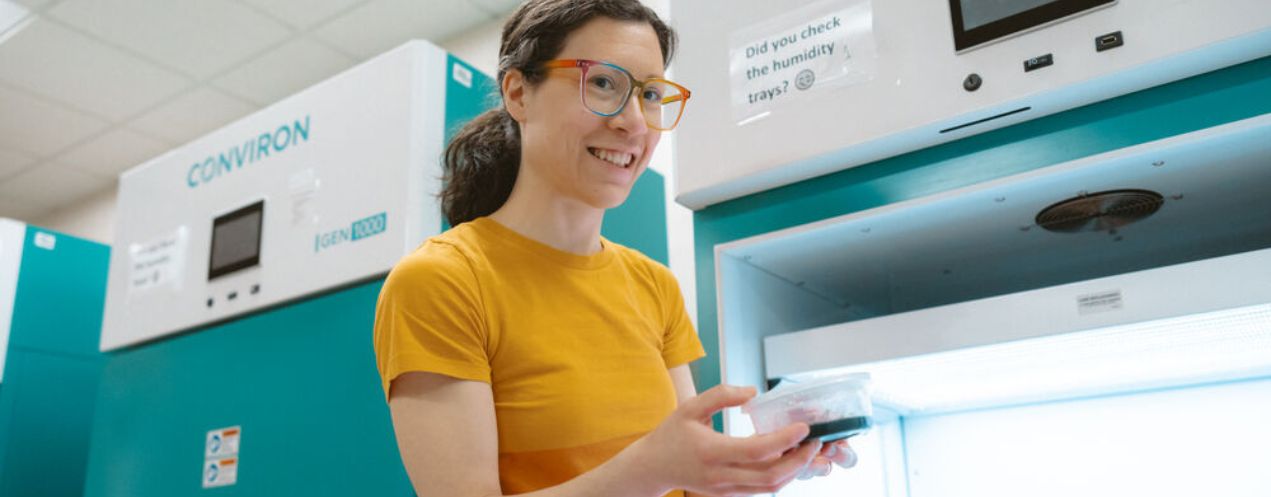Stronger trees, greener future: Sustainable balsam fir farming

Environmental stewardship often begins behind the scenes, with science and innovation quietly shaping a greener future. At NSCC’s Environment and Agriculture Technology Lab (EATLab), researchers are partnering with the Christmas Tree Council of Nova Scotia (CTCNS) to future-proof one of the province’s most cherished and climate-sensitive industries: Christmas tree farming.
Growing resilience, one tree at a time
At the heart of the project is balsam fir, a species native to Nova Scotia and a mainstay of the province’s Christmas tree farms. Known for its rich scent and naturally triangular shape, balsam fir is beloved by consumers and remarkably suited to local soil and climate conditions.
But climate change is shifting those conditions. Late spring frosts, unpredictable weather and evolving consumer habits are creating new pressures. That’s why lead researcher Adele Bunbury-Blanchette and the EATLab team are turning to science to help. “We’re working to identify seedlings that are not only beautiful, but also climate-resilient,” she explains.
To do that, they’re using tissue culture as a clonal propagation method. “We grow undifferentiated tissue, called callus, from seeds that come from a breeding orchard,” Adele says. “These seeds result from controlled crosses between trees with desirable traits - like strong needle retention or later flushing dates to resist spring frost.”
From each unique seed, the team can generate hundreds of embryos, which grow into seedlings. These are then evaluated for their performance, and top-performing lines can be preserved and reproduced at scale.
From Petri dish to field-ready fir
The science behind this is both intricate and elegant. Tissue culture involves placing plant cells in a gel-like nutrient medium, encouraging them to grow and multiply in sterile conditions. Once enough callus tissue has developed, researchers use a hormone called abscisic acid to trigger somatic embryogenesis, the process of creating embryos from non-reproductive cells.
“Conifers, especially firs, are notoriously picky,” Adele admits. “It’s taken a lot of trial and error to get where we are. But we’ve successfully cryopreserved tissue from over 50 unique genetic lines and even germinated our first seedlings from those 2023 lines.”
Cryopreservation plays a key role in the long-term success of the project. By freezing tissue in liquid nitrogen, the team can preserve the genetic diversity of each line without the need to continuously grow it in the lab. That diversity is vital, not just for selecting the best trees today, but for meeting the unknown environmental challenges of tomorrow.
A sustainable future rooted in science
This collaboration between NSCC and the CTCNS is about more than growing better trees. It’s part of a broader climate adaptation strategy and an example of how applied research can support rural economies and environmental health at the same time.
Christmas tree farming in Nova Scotia already has a relatively low environmental footprint. Balsam fir is native, farms are often located on otherwise marginal land, and real trees naturally sequester carbon. By helping the industry adapt and thrive, the EATLab is also helping preserve a land-based tradition that contributes to biodiversity, sustainability and seasonal joy.
As Adele reflects, “The more genetic lines we can add, the better our chances of success - not just for growers, but for the environment. Each tree we help improve has the potential to support wildlife, absorb carbon and reduce waste by offering a sustainable alternative to artificial trees.”
